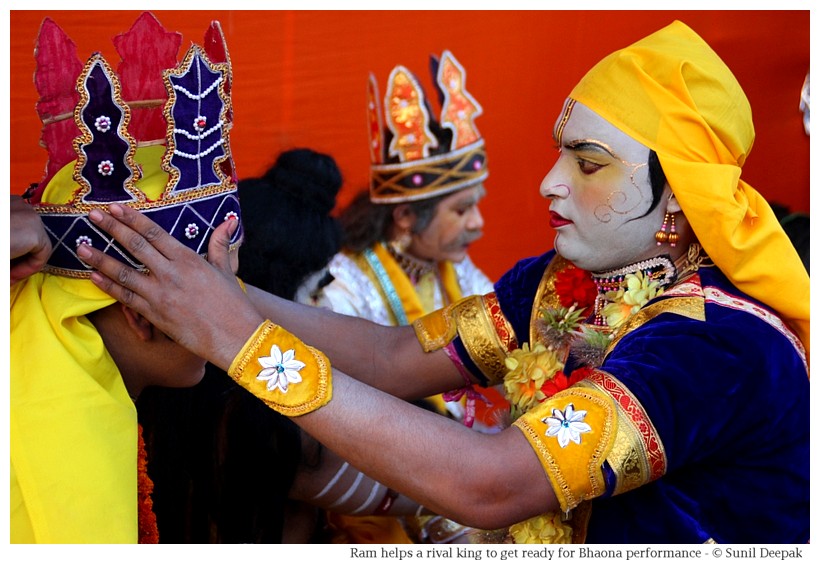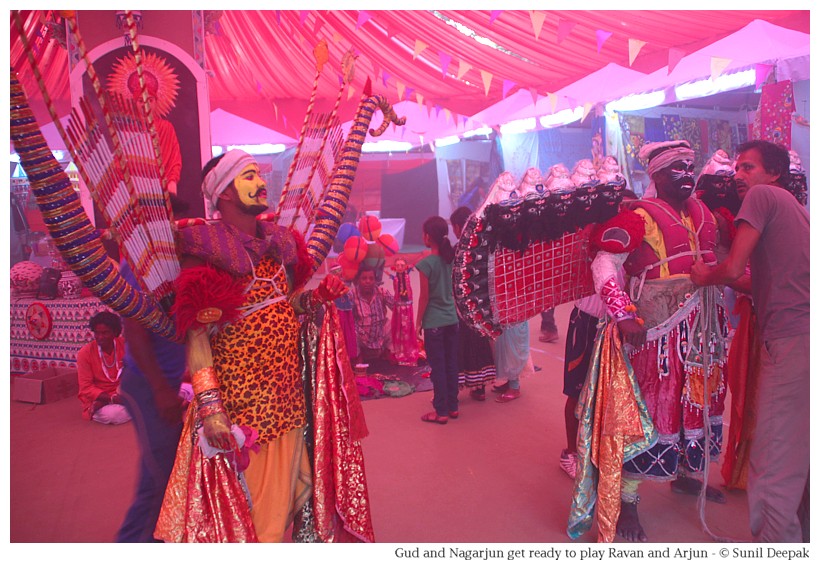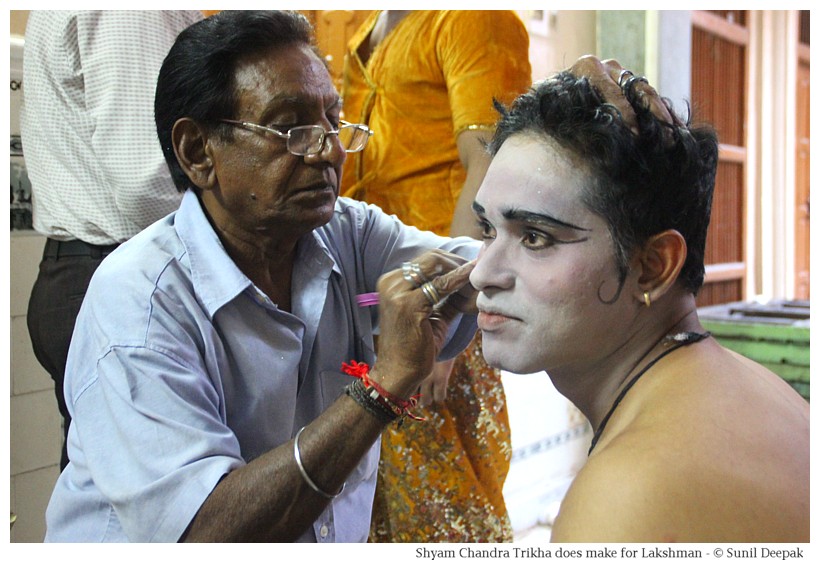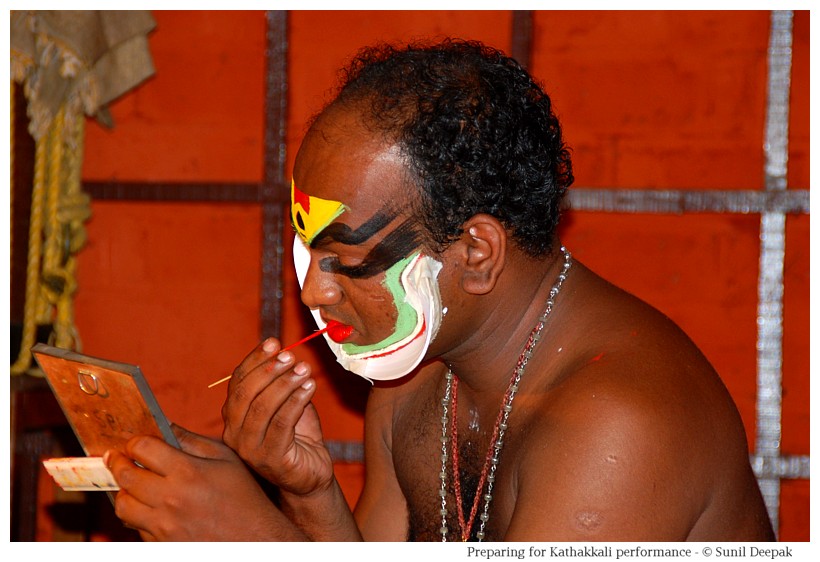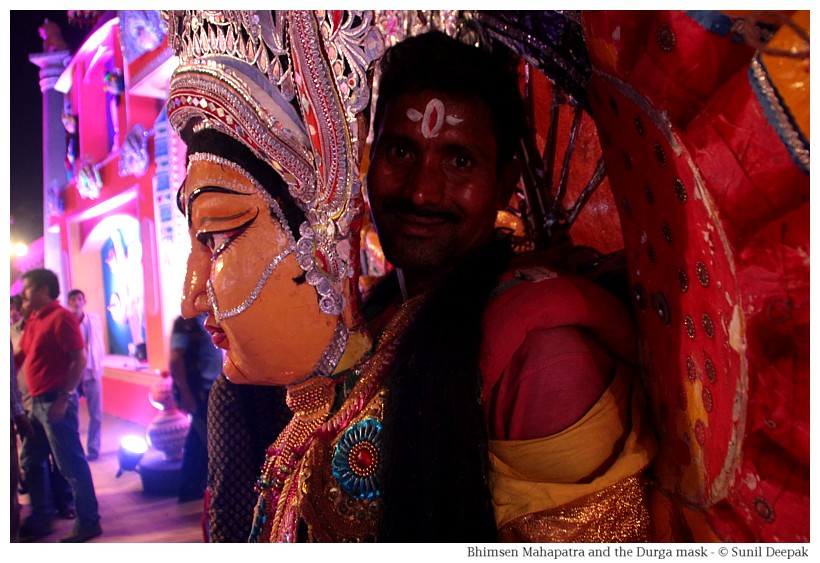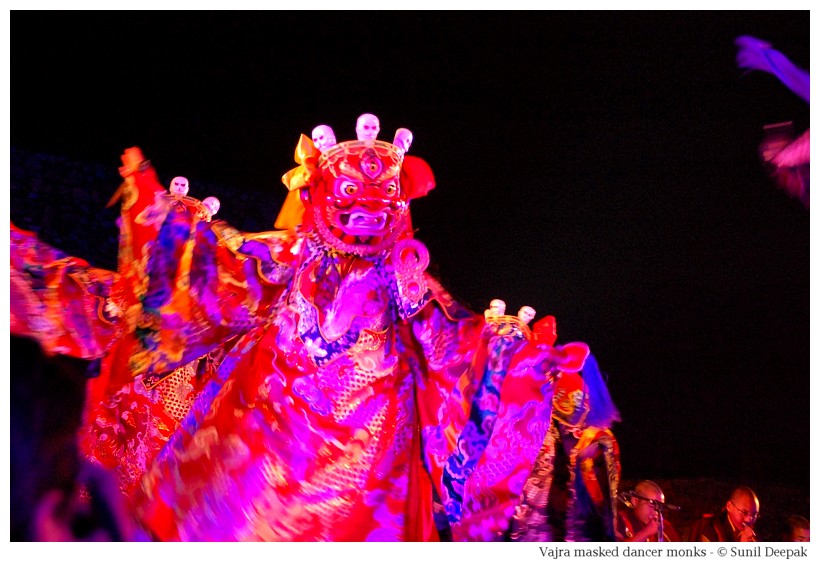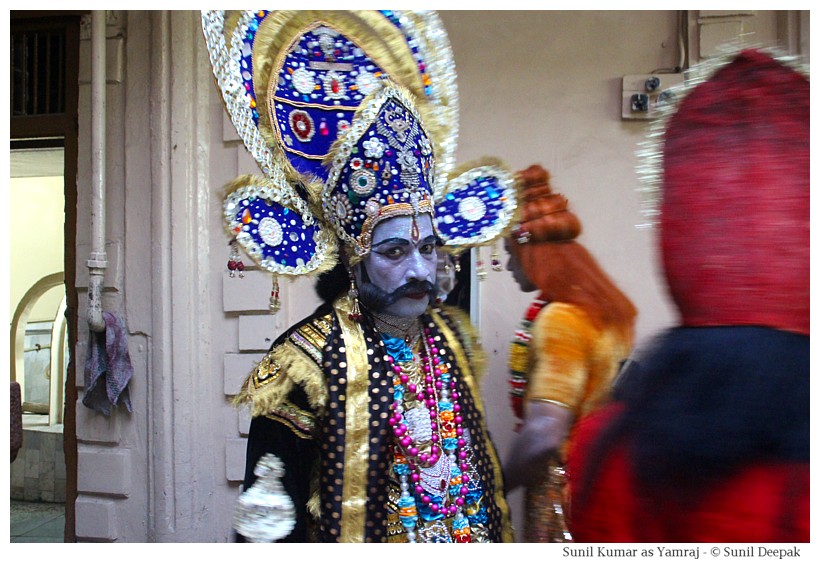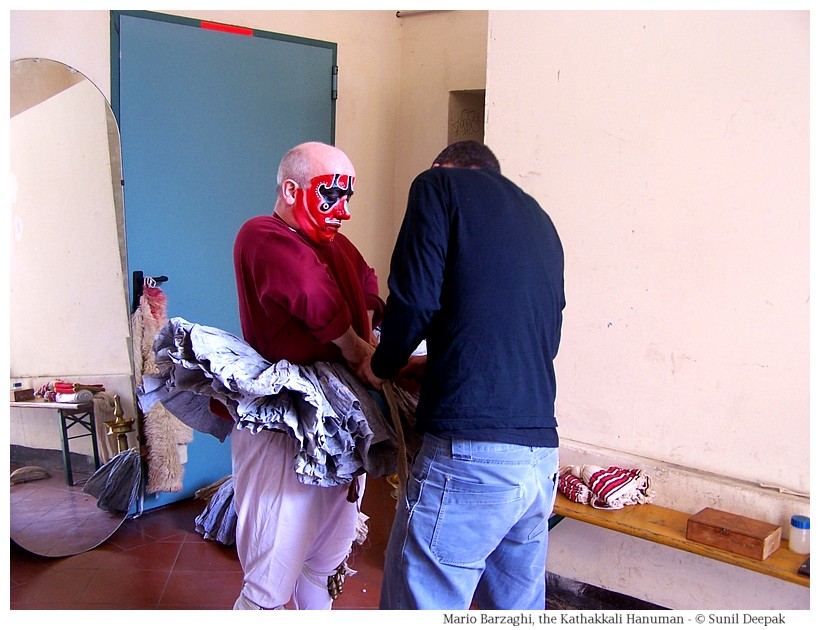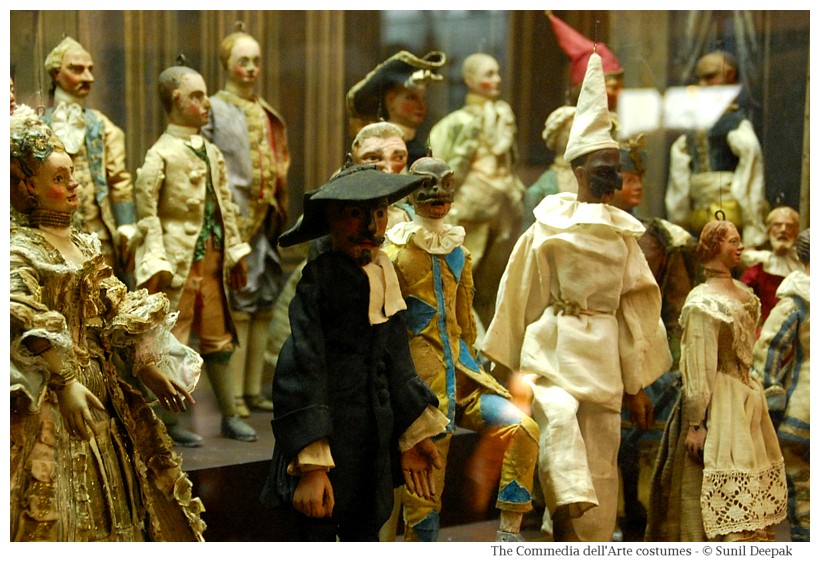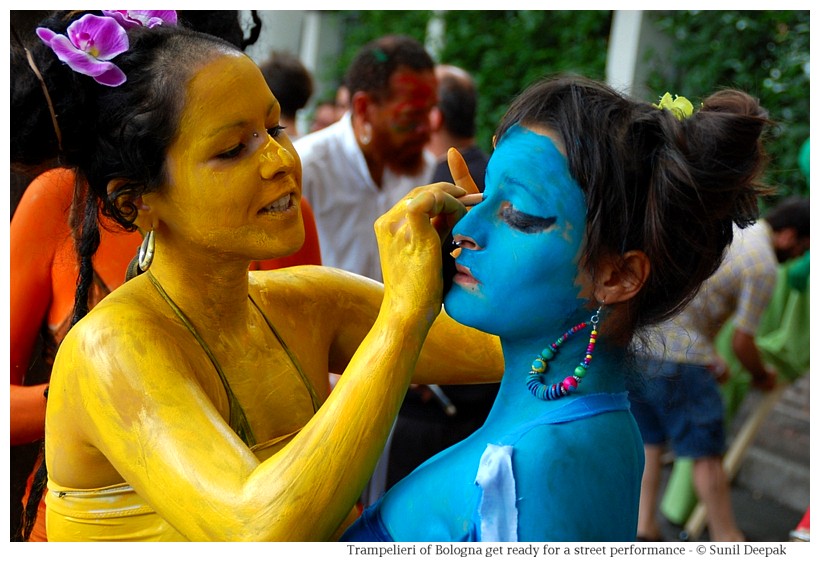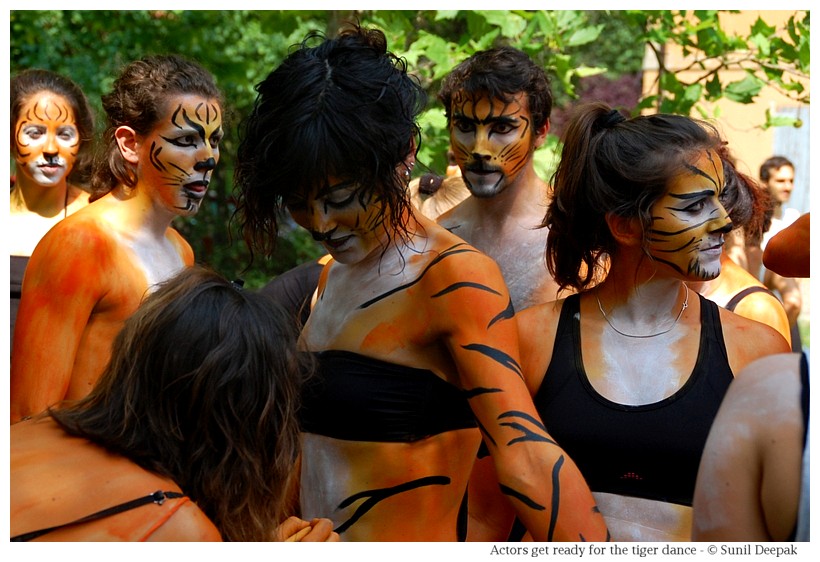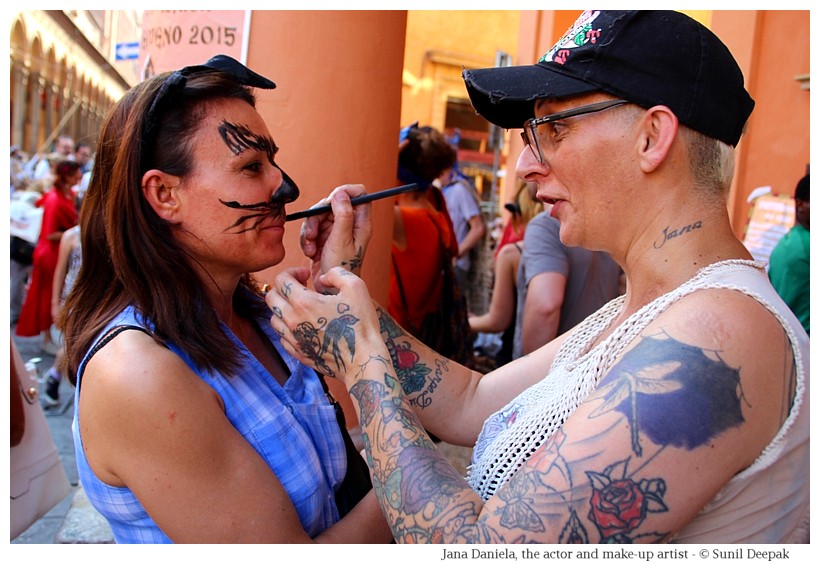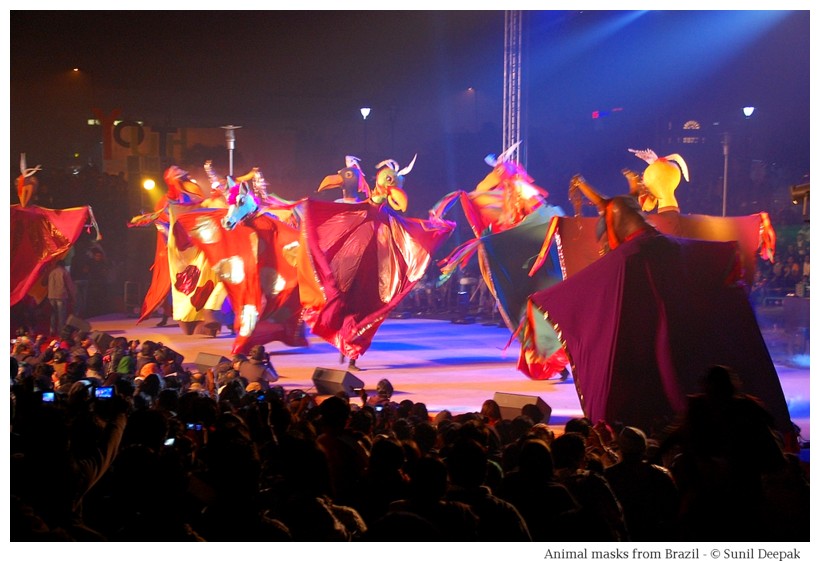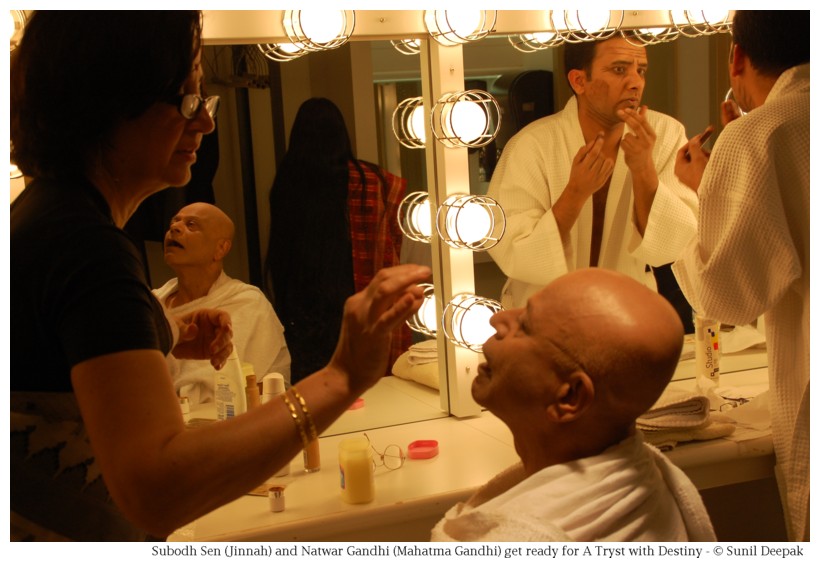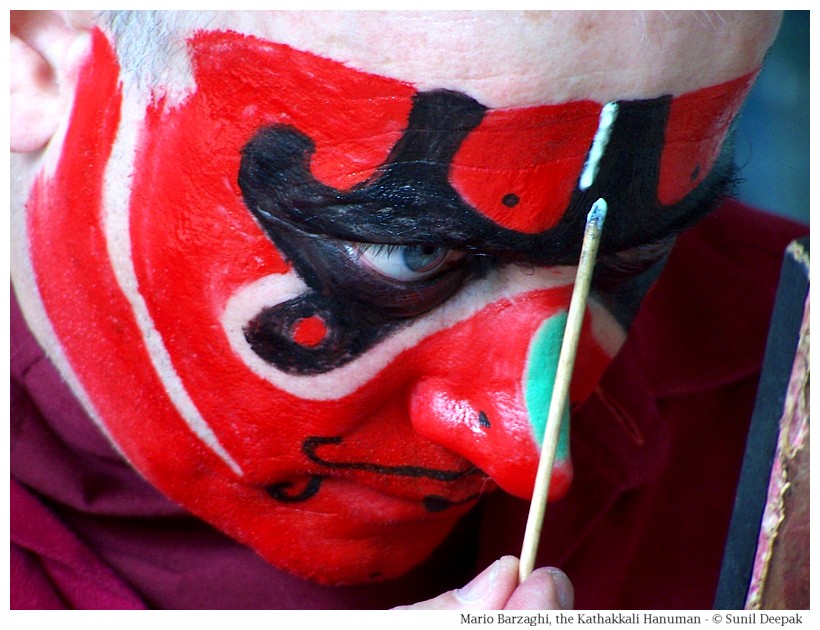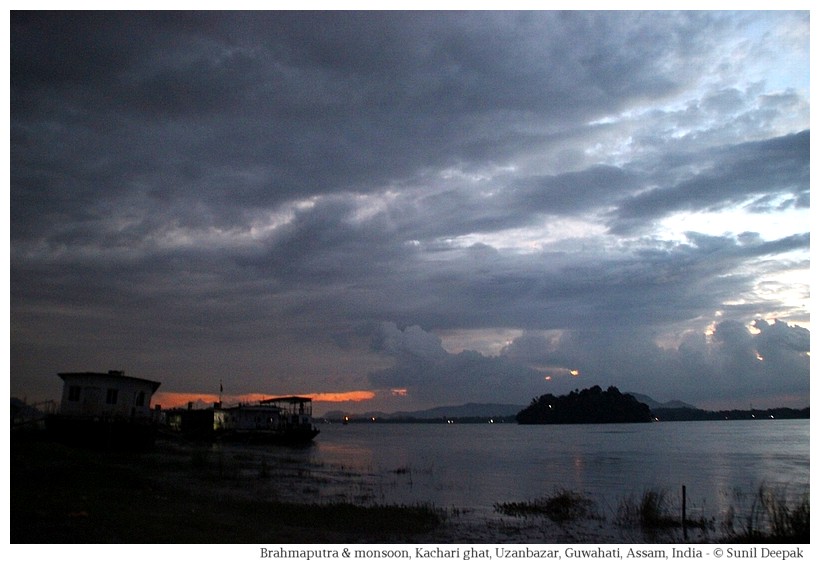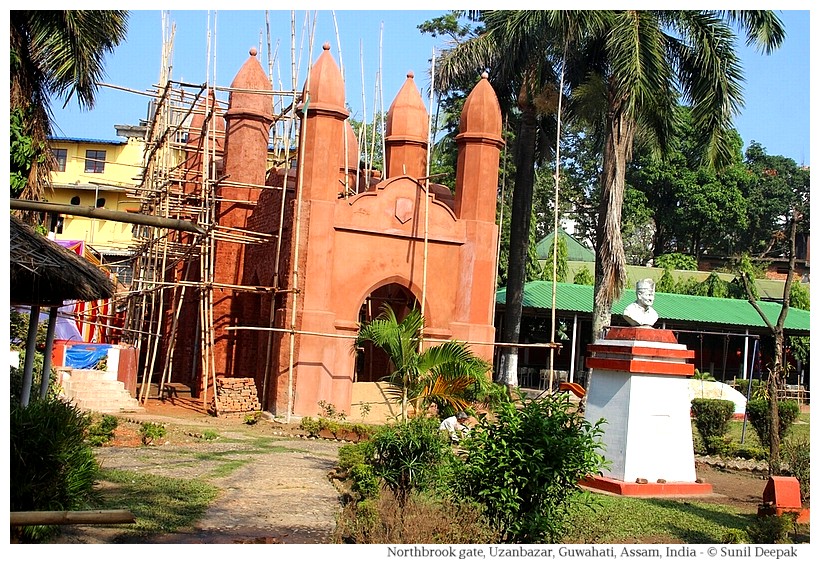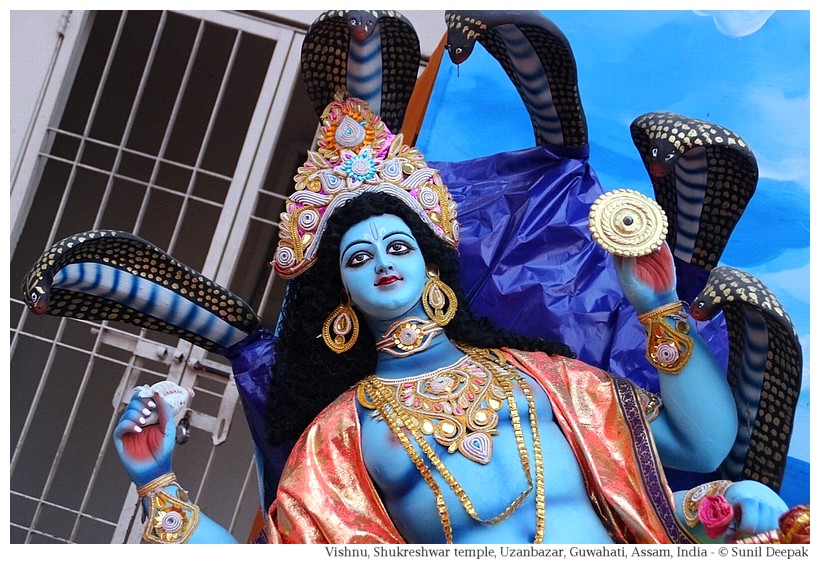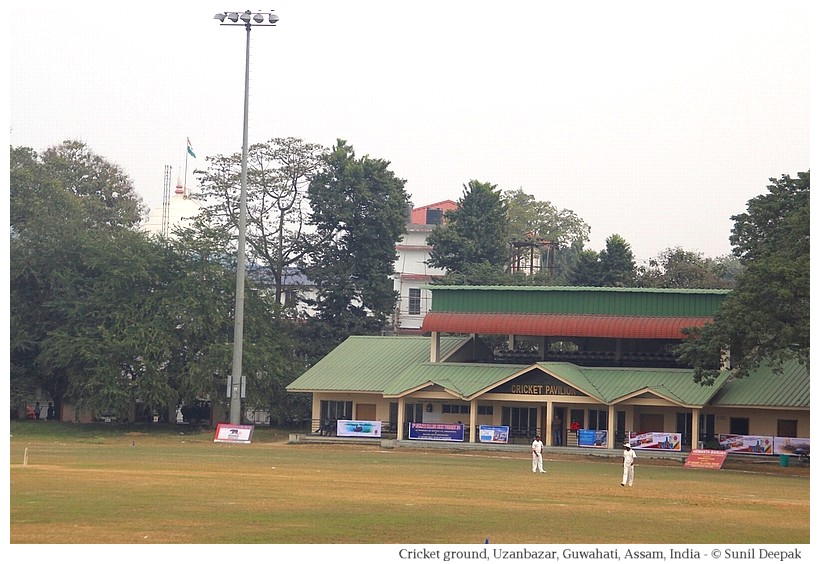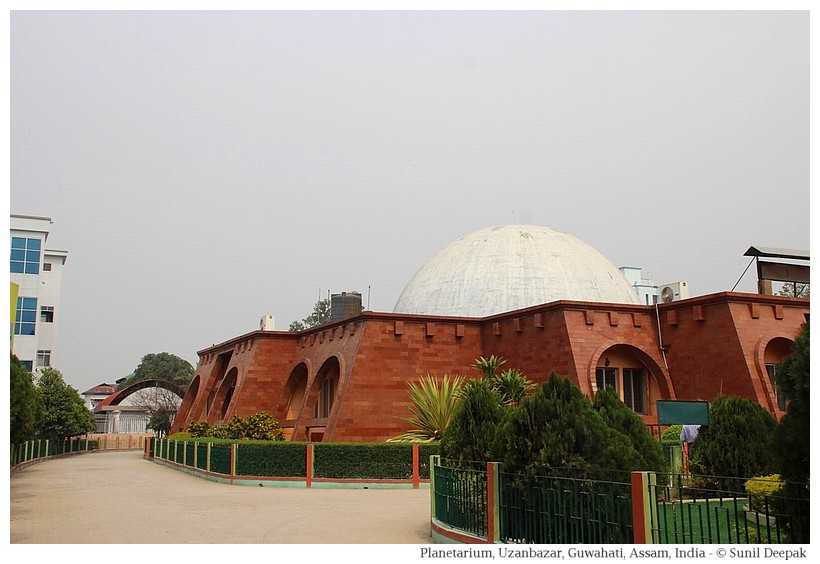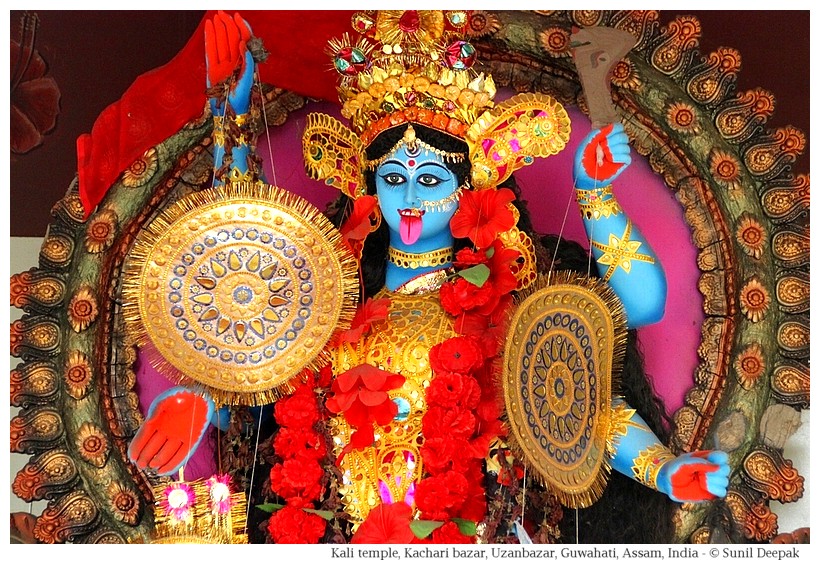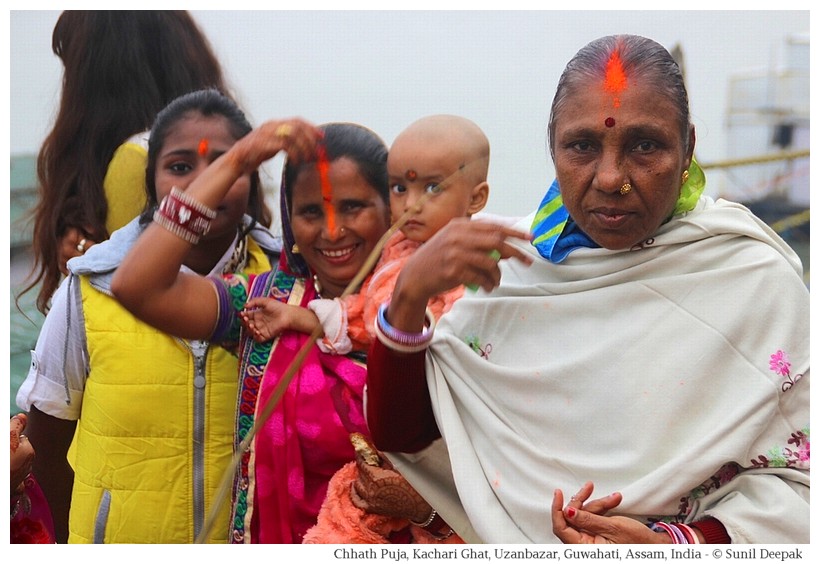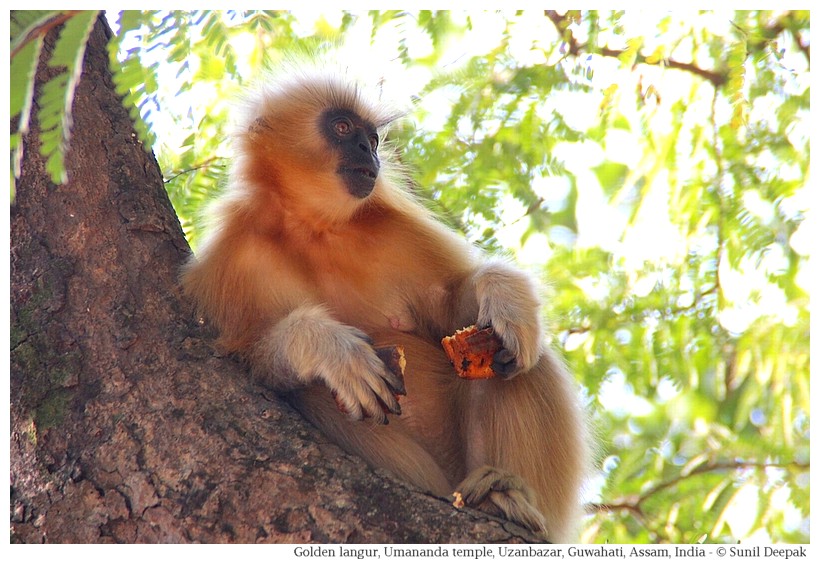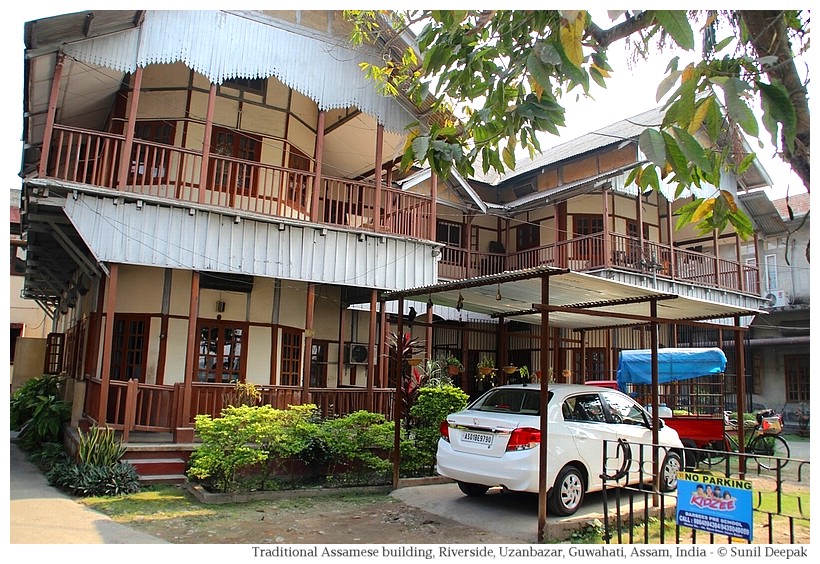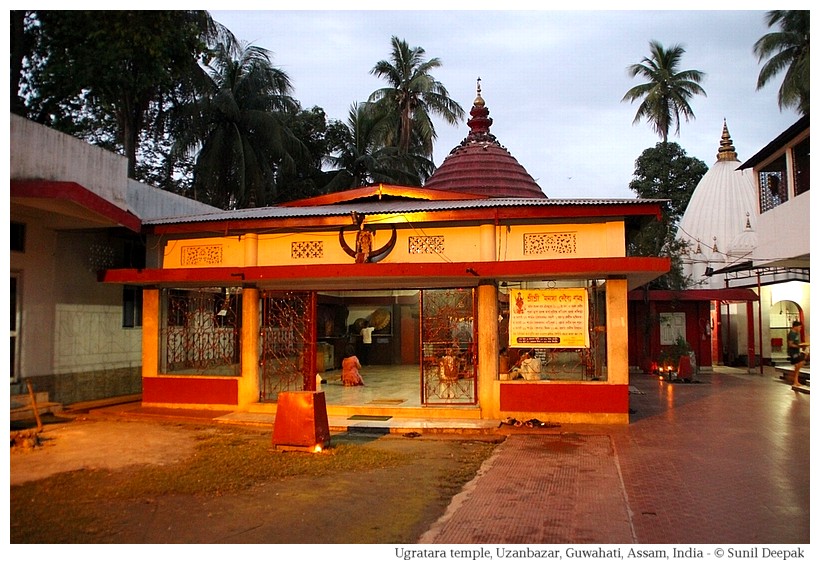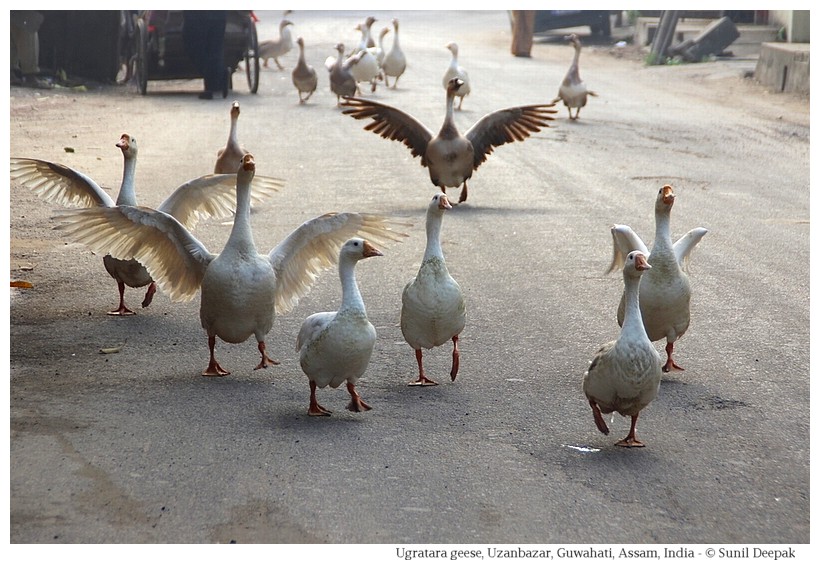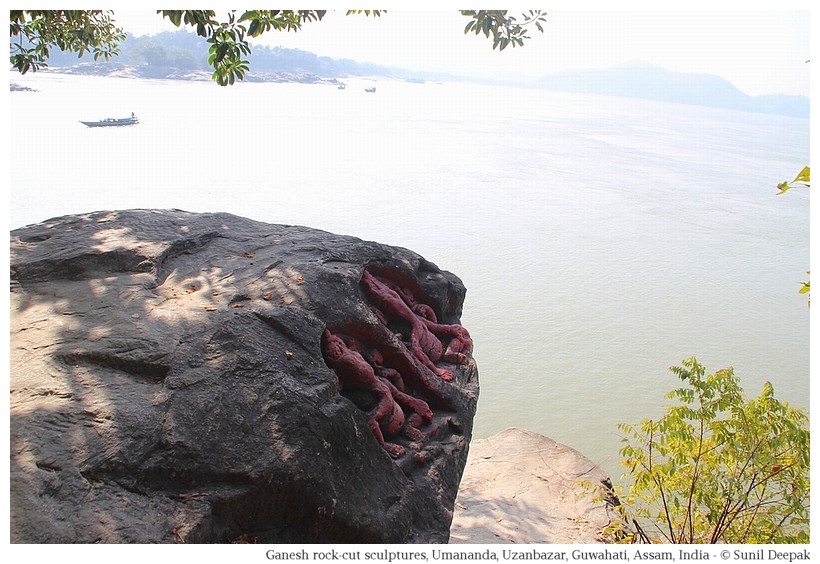Modern Mumbai is composed of 7 islands that were merged together through land reclamation in the 19th century. Before the merger, Borivali and the Kanheri caves were part of the Salsette island.
Rock-cut Caves in India
Carving rocky hills to create caves for human dwellings in India started about 2,500 years ago. One of the oldest rock-cut caves in India are at Udaygiri near Vidisha in Madhya Pradesh, dating back to 5 century BCE. Among the twenty caves of Udaygiri, 1 is dedicated to Jainism while the remaining 19 caves are dedicated to Hindu Gods. Some other rock-cut caves, such as the Pandava Caves in Panchmarhi, also seem to be equally old.
Other caves in India older than the rock-cut caves, such as the prehistoric Bhimbetaka caves near Bhopal (Madhya Pradesh), are natural caves.
The rock-cut caves were carved mainly for Buddhist and Jainist monks. They were built over periods of centuries. On the other hand, rock-cut structures linked with Hinduism are usually temples, such as the temple complex in Mahabalipuram in eastern coast of south India dating back to about 700 BCE. This could have been because Hinduism mostly has individuals or small groups in search of God and spirituality, while it lacks centralised monastic orders and therefore, did not need a large number of caves in one place for the monks.
Many Hindu temples contain “Garbhgriha” (Womb caves) where the deities are placed. In many old temples, like in the Kamakhaya temple in Guwahati (Assam), such Garbhgrihas are rock-cut structures. Though the Archaeological Survey of India (ASI) was created in 1861 under the British colonial rule, it has not been able to carry out precise dating of most of these structures. Thus, usually the information available regarding these ancient rock-cut caves is based only on myths and popular stories.
Buddhist Caves in Maharashtra, India
The tradition of carving out caves in rocks and hills for creating Buddhist monasteries probably started after the death of Gautam Buddha. Except for the Saspol caves in Kashmir, all the other well-known Buddhist cut-rock caves are located in the state of Maharashtra in central-west part of India. These include the famous Ajanta and Ellora caves from 3rd century BCE.
A total of 27 significant Buddhist caves have been identified in Maharashtra. Five of these caves are in Mumbai – Elephanta (Gharapuri), Jogeshwari, Mahakali, Mandapeshwar and Kanheri; while another 8 caves are close to Mumbai, going towards Lonavla and Pune - Bhaja, Karla, Bedse, Ghorawadi, Lenyadri, Shelarwadi and Shirwal.
The presence of these caves in Maharashtra indicates that from 5th century BCE till about early medieval times, there were a lot of flourishing communities of Buddhist monks in this part of India. These seemed to have close relationships with the seafaring trading communities.
Why did rock-cut Buddhist monasteries remain circumscribed only to central-western parts of India? Why there were no similar Buddhist monasteries in other parts of India? Was it linked to the coastal trade routes from the west coast of India? Was it a geological issue that other parts did not have rocks suitable for making caves? Was it because the artisans involved in making the caves were concentrated only in this part of India? Perhaps some experts can answer this question.
Reaching Kanheri Caves
Kanheri Caves can be reached easily through the public transport of Mumbai. Borivali local train station is just a couple of kilometres away. From the train station, a 20 minutes walk or frequent buses bring you to the entrance of Sanjay Gandhi National Park (SGNP), the wild-life park of Mumbai. A shuttle bus service connects the entrance gate to the Kanheri caves, around 6 km away inside SGNP.
If you come with your own vehicle you have to pay the vehicle entry fee at the entrance gate while the tickets for entering the Kanheri caves are sold near the caves-entrance.
Kanheri Caves
The name Kanheri comes from two words - Kanha or Krishna (Black) and Giri (mountain). The name refers to Kanha hill with the dark coloured basaltic rocks common in this area. Basaltic rocks are formed from volcanic lava. The darker coarse grain basaltic rock, as found in Kanheri, is also called Gabbro or the Black Granite.
There are 109 rock-cut caves in Kanheri. The earliest caves date back to 2nd century BCE while the most recent caves are from 1000 CE. It seems that these caves were part of a thriving learning centre, where student monks came to study the teachings of Buddha. It was also used as a resting and storage point for the seafaring traders.
Most of these caves were used as living rooms for individuals. These are mostly small caves without any specific adornments and have a rock platform to be used for sitting and sleeping. The area also has some bigger halls closer to the entrance, which were used for prayers and meetings.
The first cave close to the entrance has pillars similar to those found at Elephanta. However, this two storied cave was never completed, probably due to some defect in the rock structure. (Image below)
When I saw it, I thought that it resembled a hostel mess. But it also has some beautiful sculptures on its walls, and I think that an eating room was unlikely to host beautiful sculptures. So I don't know if it could have been an eating place, with kitchens and store rooms around the main hall and the two water cisterns. To confirm it we need to check if there are signs of fires in the rooms used as kitchens.
One of the Buddha sculpture has Buddha shown sitting with his feet on the ground - I had never seen a similar statue of Buddha before. (In the image below)
Inscriptions in Kanheri Caves
There are more than 70 inscriptions in Kanheri. Three scripts have been used in these inscriptions – Brahmi, Devnagari and Pahlavi. The inscriptions provide information about local rulers such as Vashishtiputra Satakarni, about the supervisors, artisans and artists who worked here, and general information such as a list of local birds. Most common inscriptions are about the gifts of caves and cisterns by the rich merchants of nearby towns such as Sopara and Kalyan.
One of the caves has an inscription about a “Tooth cave”. It is thought that this cave temporarily hosted a tooth, a relic of Buddha, which was later placed in a big stupa near the great temple hall. More recent excavations of this stupa did not show any tooth, though a brass plate was found. It is thought that the tooth was removed from the stupa in some earlier excavations. It is not clear if this tooth relic was in any way related to the famous tooth relic in a stupa in Sri Lanka. According to some experts, the brass plate found in Kanheri refers to 494-95 BCE and thus propose it as the oldest rock-cut Buddhist caves in India.
The image below shows one of the epigraphs near the Darbar hall (cave 11). Close to the epigraph is a bass-relief showing a strange figure which reminded me of the bull horns. I wondered if it was linked to Pashupati Nath (Shiva) worship or if it could be linked to the Pashupati seals found in Indus valley (image below).
A water stream flows between the northern and southern hills of Kanheri. One of the inscription mentions the construction of a dam for the collection of water. However, the caves are on the higher parts of the southern hill and thus going down to collect water from the stream must have been difficult. For this reason, as well to answer the water needs of a large number of persons, a detailed water collection and conservation system was designed in Kanheri including a network of canals and cisterns, as shown in the image below.
Some Specific Things to See in Kanheri
There were a few other things in Kanheri caves which struck me as interesting. These included the numerous steps carved in the rocks for going from one place to another. Some of these were very long. These seemed like snakes winding on the rock surfaces.
I have been to the more famous Elephanta caves on an island near the Gateway of India. It has a beautiful Trimurti scultpure. However, Elephanta does not have the rugged beauty of Kanheri. I was really surprised by this visit because I was not expecting to see such a vast and imposing structure with such beautiful sculptures.
I have not yet visited the other three rock-cut Buddhist caves in Mumbai and and if they are half as beautiful as Kanheri, it will be worthwhile to go and look for them.
The large number of caves in and around modern Mumbai also means that this area was already inhabited many centuries before the British came and developed the city of Bombay in the 19th century.
If you live in or are only visiting Mumbai and are interested in the rich Indian cultural heritage, do visit Kanheri.
I found some useful archaeological information about the caves in an article by Saurabh on the Indian History and Architecture website.
***
















